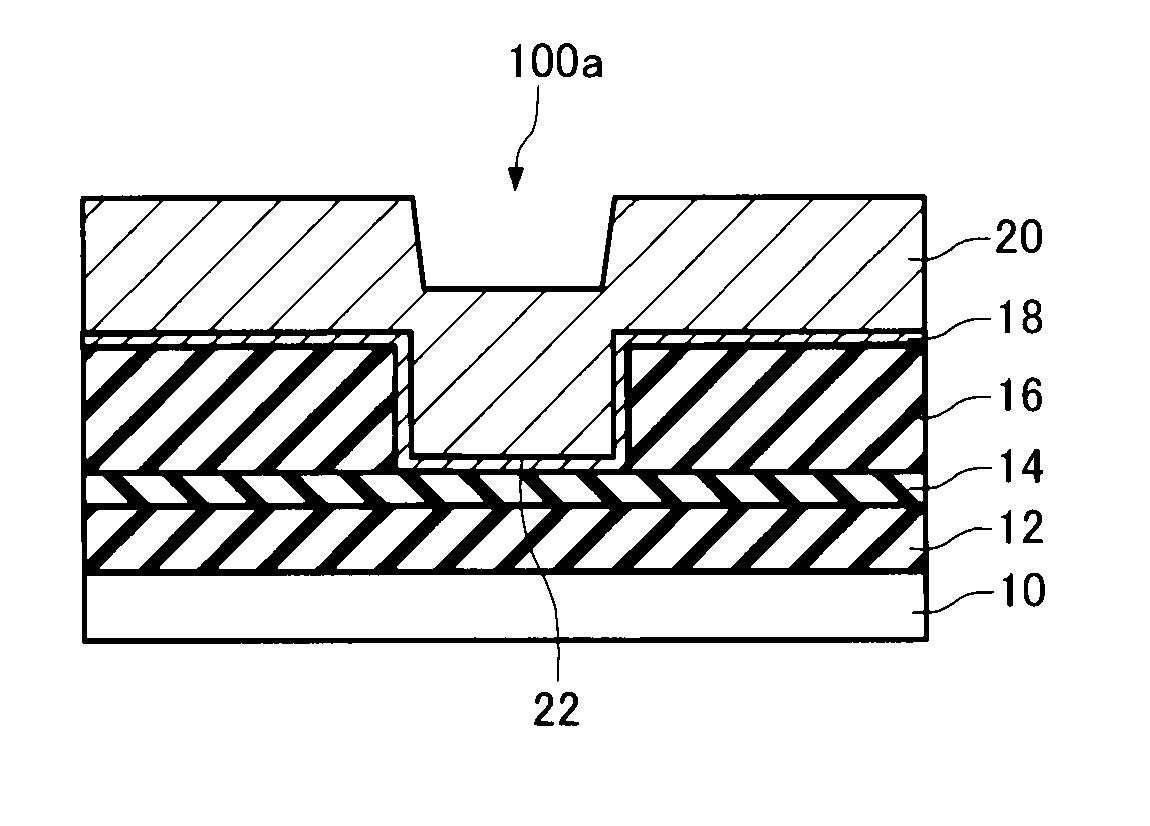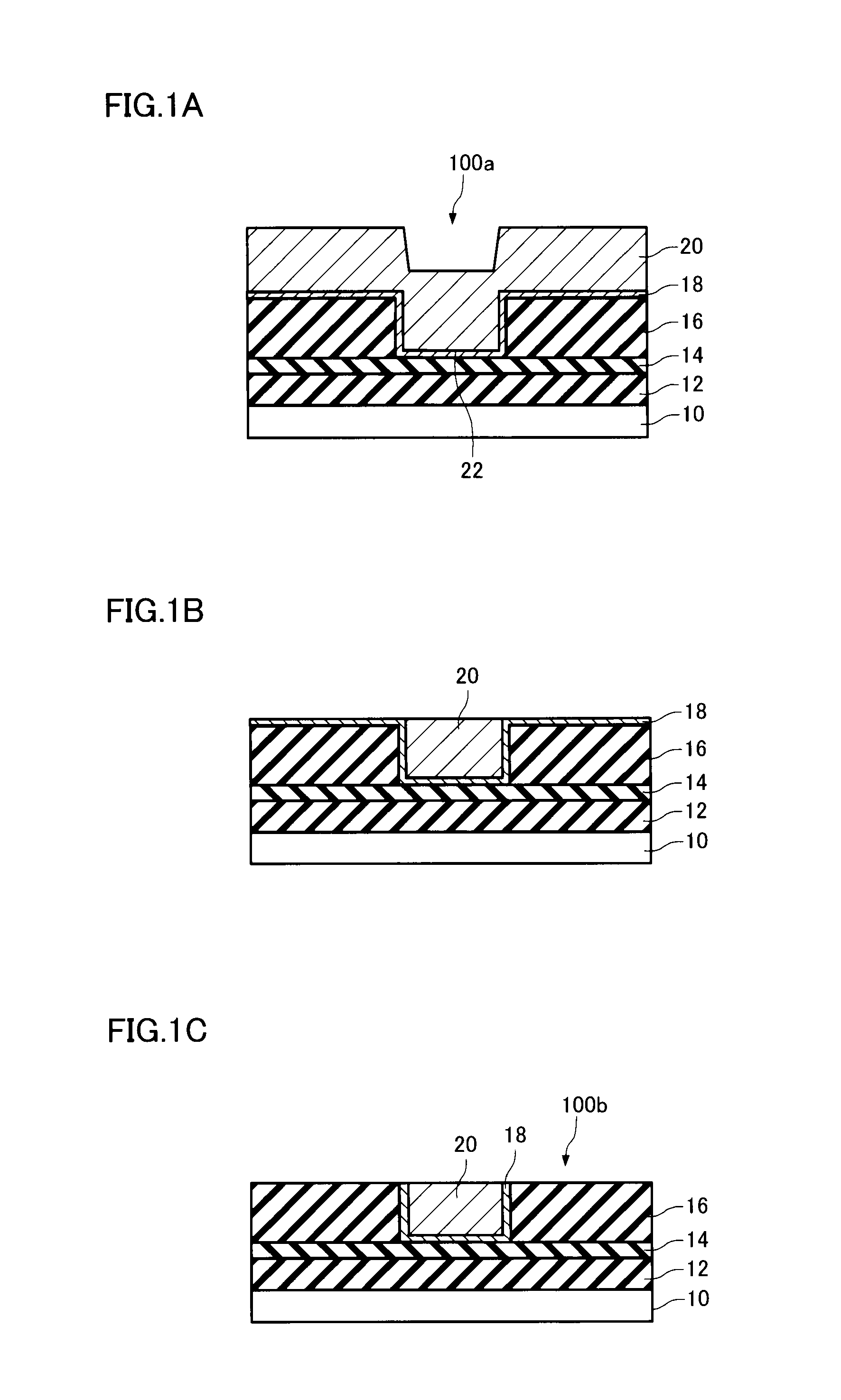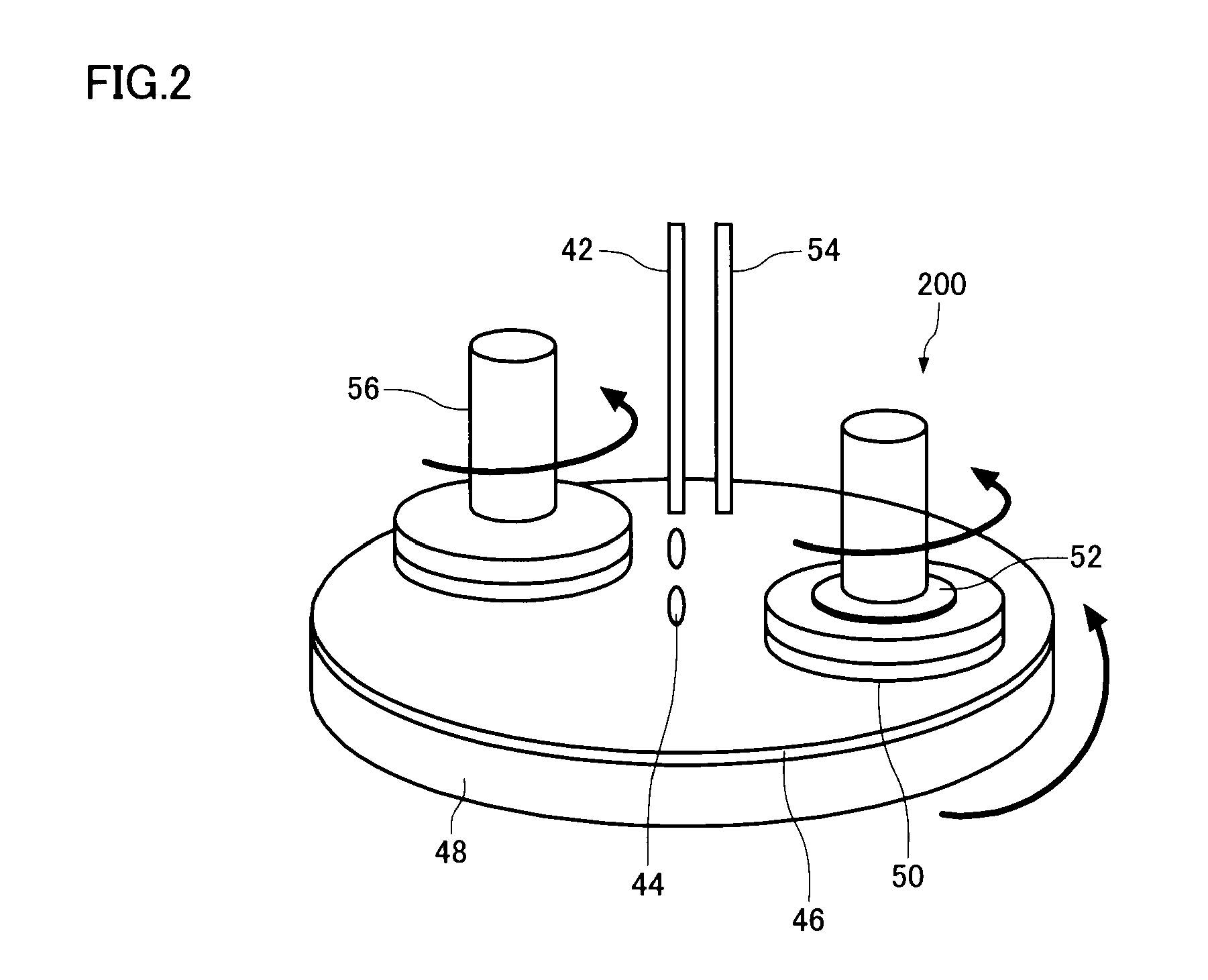Aqueous dispersion for chemical mechanical polishing and method for preparing the same, kit for preparing aqueous dispersion for chemical mechanical polishing, and chemical mechanical polishing method for semiconductor device
a technology of chemical mechanical polishing and aqueous dispersion, which is applied in the direction of electrical equipment, chemical apparatus and processes, other chemical processes, etc., can solve the problems of large polishing friction, difficult application, and delamination or destruction of films, and achieve stable polishing of metal films, low friction, and high removal rate
- Summary
- Abstract
- Description
- Claims
- Application Information
AI Technical Summary
Benefits of technology
Problems solved by technology
Method used
Image
Examples
examples 1 to 14
4.3 Examples 1 to 14 and Comparative Examples 1 to 7
4.3.1 Preparation of Chemical Mechanical Polishing Aqueous Dispersion
example 1
(a) Example 1
[0109]A polyethylene bottle was charged with 0.3 mass % (solid content) of the colloidal silica aqueous dispersion C35 (the amount of each component is based on the mass (100 mass %) of the chemical mechanical polishing aqueous dispersion). After the addition of 0.5 mass % of alanine, 0.5 mass % (ammonia content) of 28% aqueous ammonia, 0.1 mass % (solid content) of ammonium dodecylbenzenesulfonate, 0.05 mass % (solid content) of a N-2-hydroxyethylacrylamide-2-acrylamide-2-methylpropanesulfonic acid copolymer (weight average molecular weight (Mw)=450,000), and 0.2 mass % of 30 mass % of aqueous hydrogen peroxide, ion-exchanged water was added so that the total amount of the components was 100 mass %. The mixture was stirred for one hour. The mixture was then filtered through a filter having a pore size of 5 micrometers to obtain a chemical mechanical polishing aqueous dispersion of Example 1 (see Table 2).
examples 2 to 14
(b) Examples 2 to 14 and Comparative Examples 1 to 7
[0110]A chemical mechanical polishing aqueous dispersion of each example was prepared in the same manner as described above, except for changing the type of water-soluble polymer and the additional components as shown in Tables 2 to 4. In Examples 13 and 14, two types of water-soluble polymers were added at concentrations shown in Table 3.
[0111]In Tables 2 to 4, “Pelex NB-L” is a surfactant having a sodium alkylnaphthalenesulphonate structure manufactured by Kao Corporation, “Pelex OT-P” is a surfactant having a sodium alkylsulfosuccinate structure manufactured by Kao Corporation, and “Emulgen 1135S-70” is a surfactant having a polyoxyethylene alkyl ether structure manufactured by Kao Corporation. “Pelex NB-L” and “Pelex OT-P” are anionic surfactants, and “Emulgen 1135S-70” is a nonionic surfactant.
4.3.2 Evaluation of Copper Film Removal Rate
[0112]A porous polyurethane polishing pad (“IC” manufactured by Rohm and Haas) was installe...
PUM
 Login to View More
Login to View More Abstract
Description
Claims
Application Information
 Login to View More
Login to View More - Generate Ideas
- Intellectual Property
- Life Sciences
- Materials
- Tech Scout
- Unparalleled Data Quality
- Higher Quality Content
- 60% Fewer Hallucinations
Browse by: Latest US Patents, China's latest patents, Technical Efficacy Thesaurus, Application Domain, Technology Topic, Popular Technical Reports.
© 2025 PatSnap. All rights reserved.Legal|Privacy policy|Modern Slavery Act Transparency Statement|Sitemap|About US| Contact US: help@patsnap.com



